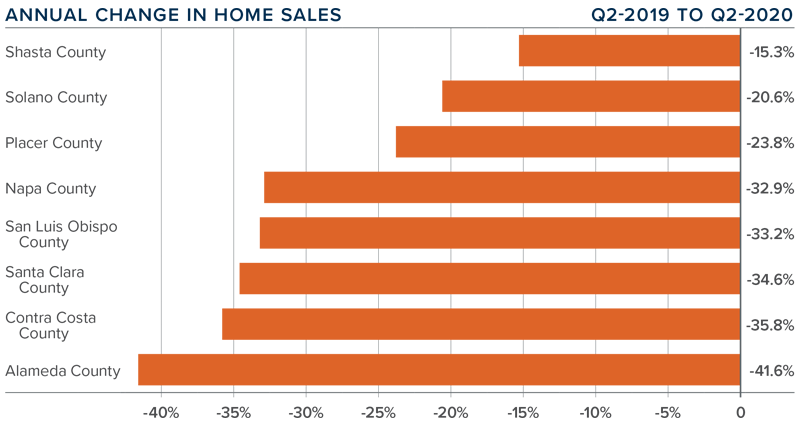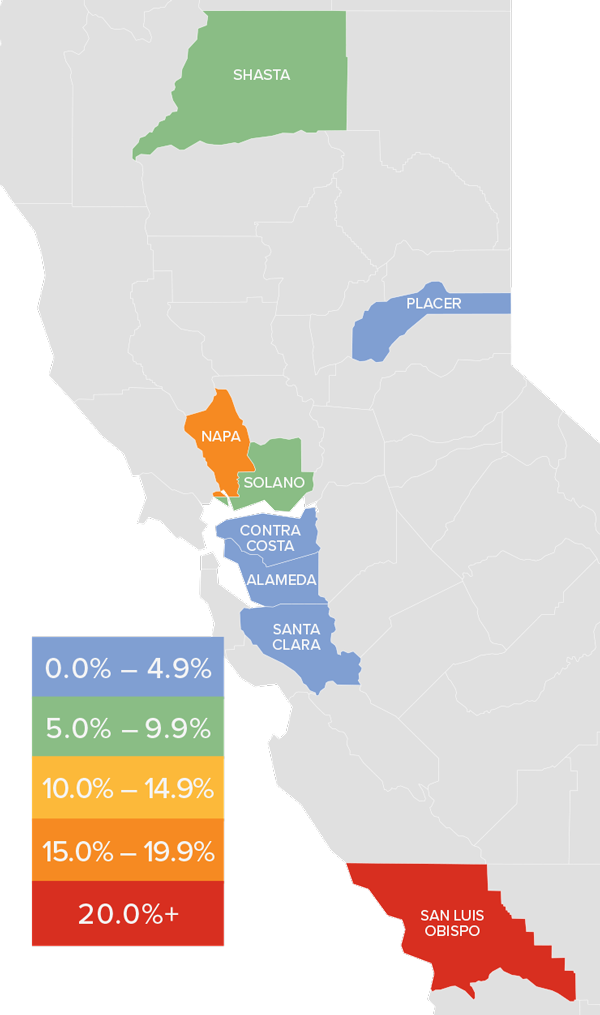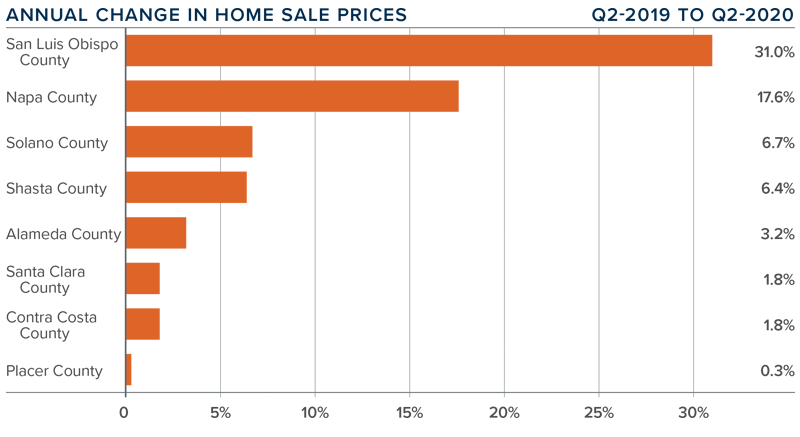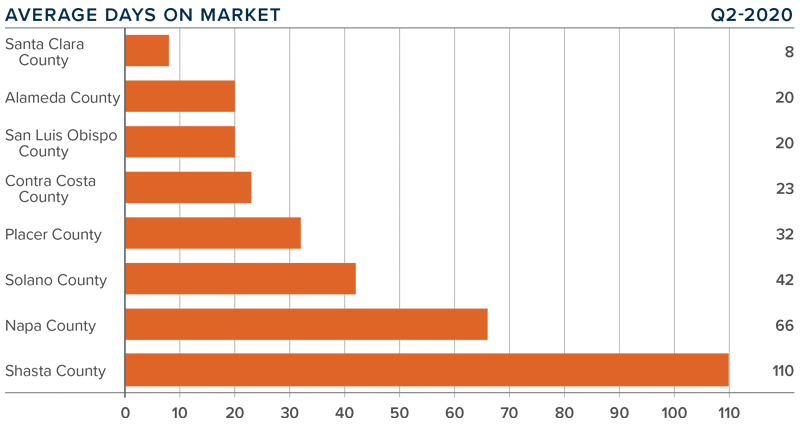The following analysis of the Northern California real estate market is provided by Windermere Real Estate Chief Economist Matthew Gardner. We hope that this information may assist you with making better-informed real estate decisions. For further information about the housing market in your area, please don’t hesitate to contact your Windermere agent.
ECONOMIC OVERVIEW
COVID-19 has significantly impacted employment in Northern California, causing the loss of more than 434,000 jobs in March and April and driving the unemployment rate up from 3.9% in March to 13.4% in April. However, although there is certainly a long way to go, employment has started to return. In May and June, the region regained 85,900 jobs and the unemployment rate dropped slightly to 12.2%. Although it is certainly too early to say we are out of the woods, we seem to be headed in a positive direction. That said, COVID-19 infection rates in California started to rise significantly in June, forcing the state to reinstate some restrictions. This is likely to slow the economic recovery until the rising infection rate gets back under control.
HOME SALES
❱ In the second quarter of 2020, 9,124 homes sold, a drop of 34.5% compared to the second quarter of 2019. However, there were some encouraging signs: total closings were up 47.4% in the second quarter from the first quarter of this year.
❱ Sales were negative across the board compared to the second quarter of 2019. The largest drop in sales was in Alameda County; the smallest decline was in small Shasta County.
❱ Listing activity was down 30.5% compared to the second quarter of 2019, but rose 58.6% compared to the first quarter of 2020.
❱ I was encouraged to see pending home sales up significantly from the first part of this year and I hope that will translate to higher closings in the third quarter.

HOME PRICES
❱ The average home price in the Northern Californian counties contained in this report rose 1.5% year-over-year to $979,616.
❱ The most affordable counties in terms of average sale prices were Shasta and Solano, though price growth in these markets was very solid.
❱ Average prices rose in all counties contained in this report, with impressive increases in San Luis Obispo and Napa counties.
❱ Home-price growth is a function of supply and demand. Supply levels picked back up in the second quarter, which is a good thing. However, it remains to be seen if demand will rebound given rising COVID-19 infection rates.

DAYS ON MARKET
❱ The average time it took to sell a home in the Northern Californian counties covered by this report dropped nine days compared to the second quarter of 2019.
❱ The amount of time it took to sell a home dropped in all counties other than Placer and San Luis Obispo, which were up by three days and one day, respectively.
❱ In the second quarter, it took an average of 40 days to sell a home, with homes selling fastest in Santa Clara County and slowest in Shasta County.
❱ The greatest drop in market time was in Shasta County, where it took 48 fewer days to sell a home than in the second quarter of 2019.

CONCLUSIONS
 This speedometer reflects the state of the region’s real estate market using housing inventory, price gains, home sales, interest rates, and larger economic factors.
This speedometer reflects the state of the region’s real estate market using housing inventory, price gains, home sales, interest rates, and larger economic factors.
The drop in listings caused by COVID-19 in first quarter is starting to rebound, but the region is still reacting to the impact of the pandemic. Demand, although not as robust as I would like to see, is still there, as demonstrated by significant price increases. But a resurgence in COVID-19 cases continues to make the direction of the housing market uncertain.
Assuming the state gets new infection rates back under control and the region starts to reopen again, I expect the market to start performing a bit better later in the year. As such, I am leaving the needle in the same position as in the first quarter of this year.
ABOUT MATTHEW GARDNER
 As Chief Economist for Windermere Real Estate, Matthew Gardner is responsible for analyzing and interpreting economic data and its impact on the real estate market on both a local and national level. Matthew has over 30 years of professional experience both in the U.S. and U.K.
As Chief Economist for Windermere Real Estate, Matthew Gardner is responsible for analyzing and interpreting economic data and its impact on the real estate market on both a local and national level. Matthew has over 30 years of professional experience both in the U.S. and U.K.
In addition to his day-to-day responsibilities, Matthew sits on the Washington State Governors Council of Economic Advisors; chairs the Board of Trustees at the Washington Center for Real Estate Research at the University of Washington; and is an Advisory Board Member at the Runstad Center for Real Estate Studies at the University of Washington where he also lectures in real estate economics.
 Facebook
Facebook
 X
X
 Pinterest
Pinterest
 Copy Link
Copy Link



